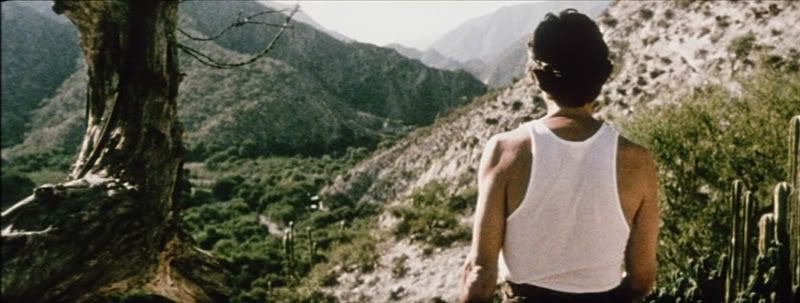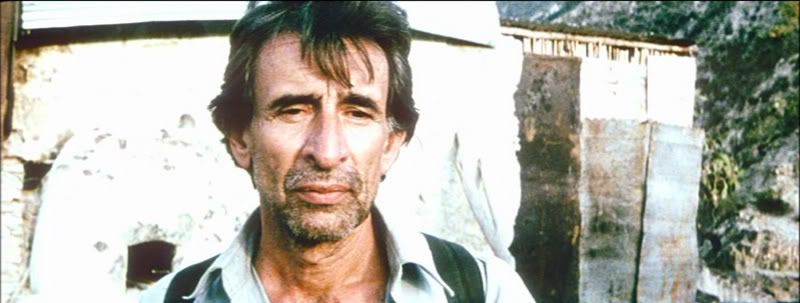CINCO DE VINYL: Everything is Everything: Beauty, Ugliness, and Universality in Reygadas' Japón
by Leile One

I wish we had more of a Mexican presence here in Boston. In case you didn’t know, Mexico is the best. Mexican food is the bombest substance on the planet. All the funniest, coolest kids I hung out with in high school back in Cali were descendants of the almighty Aztecs: funky fresh Vatos who could school you on American shit while maintaining a culture supreme. Hell, what would California be without the vast contributions of our Chicano brethren? And people are always talking about immigration reform...please. The West Coast wasn’t yours to begin with.
But how does it play out in New England? For the most part, the scene is non-existent. Indeed, La Raza is represented to a decent extent in a sizable Brazilian population in certain sectors of Boston, but there definitely isn’t much Mexican action going on. Which is why it seems weird that the city is hyping Cinco de Mayo so hard this year. Some of the local Irish Pubs are boasting celebrations for the holiday, which amount to discounted prices on bottles of Corona and perhaps a special on Margaritas. In special cases you may even get a live mariachi band (for a cover fee), but the whole thing seems kind of bizarre and out of place. Maybe Bostonians are just down to get drunk for whatever occasion? There’s my idea of a good time: a bunch of frat boys and blond chicks slamming Coronas and getting loud.
 I’d give my left arm to be in the Mission District in SF this afternoon, fucking with some al pastor at El Farolito and getting in on the real celebration. Alas, it isn’t really an option, so I’ve elected to skip the weird bar scene here and instead take in some Carlos Reygadas cinema in the privacy of my own living room. I have rented a copy of his first feature, Japón, which is perhaps the closest you can get to visiting Mexico itself without moving an inch. Tell Tommy O’Doyle’s Pub I’ll take a rain check.
I’d give my left arm to be in the Mission District in SF this afternoon, fucking with some al pastor at El Farolito and getting in on the real celebration. Alas, it isn’t really an option, so I’ve elected to skip the weird bar scene here and instead take in some Carlos Reygadas cinema in the privacy of my own living room. I have rented a copy of his first feature, Japón, which is perhaps the closest you can get to visiting Mexico itself without moving an inch. Tell Tommy O’Doyle’s Pub I’ll take a rain check.Japón is about decisions, actions, and consequences. It’s also about mountains. Additionally, the film contains graphic footage of horses copulating, and an extended scene featuring sex with the elderly. There’s a lot going on here.
This is my first experience with Reygadas’ work, and I find it challenging to say the least. Japón hits hard from multiple angles, reflected in stunning, spinning 360-degree camera shots of the Mexican landscape, as well as the multi-dimensionality of each situation presented. The film continually demands questions of morality, right and wrong, without giving any answers as to how the audience should categorize what’s happening in each scene. The result is confusion for the spectator, leading to an examination of one’s own beliefs, and it’s entirely intentional on the part of Reygadas.

The surface story is of a painter who leaves Mexico City in order to commit suicide on the countryside. Almost to the site of his mission, he stops in a village and ends up falling in love with an aging peasant woman with the heart of a Mother Theresa. The old woman gives and gives, and in the end it is this over-giving that results in tragic consequences. Her generosity may prove to be her downfall, but in the end we are unsure whether to conclude that we should therefore strive to avoid giving. Like I say, it’s complicated stuff. But I like that. I’d prefer for a film to test my reactionary tendencies to the point of moral confusion than to tell me how to feel. There is beauty here, no doubt, and there is ugly too. Sometimes the boundaries blur within the same image. When asked in an interview why he tends to favor the ultra-long shots, Reygadas responds with perfect justification: “To anyone who doesn’t like the long shots...deal with it. There’s so much going on within the frame; look at it.”

At times the sheer lengthiness of the landscape shots seems to stretch time itself, making each scene seem to last even longer than it does in terms of clock-time. This can be disorienting to your average American moviegoer, who may become restless and wish for dialogue or tits or explosions. Sorry, dude. There’s a lot going on in that there canyon-side panorama, if it’s any consolation.
When there is dialogue, the picture appears at times even stranger. The protagonist’s sexual advances upon his elderly host may be disquieting, but even more surprising is her rather casual agreement to go through with the deed. She agrees out of a sense of generous holiness, not because she finds him attractive or thinks it’s a great idea. She believes that by committing this selfless act, despite her discomfort, she may be saving him from ending his own life. It all culminates in what is perhaps the most uncomfortable sex scene ever committed to film. Only to be followed by more glorious revolving shots of the Mexican countryside.

It is fitting that a film which insists on invoking such a wide range of emotional responses would be titled after a land as distant yet somehow similar as Japan itself. Why Japan? When one envisions Tokyo, do the images that come up seem synonymous with a tiny, barren village in rural Mexico? Or is it the mountain itself, towering over the characters in the film, like Mount Fuji which plagued the haiku masters time and time again. Perhaps we could apply the metaphor of Seppuku, the ancient Japanese suicide ritual, to the film’s protagonist whose aim is to end his own life. In the end, after spinning one’s head 360 degrees over this puzzle and all of the others in Japón, viewers potentially come to the conclusion that “everything is everything and let’s not worry our pretty little heads about it.” After all, Reygadas himself has mentioned that he would have rather left this film untitled.
Confounding title or no, the images are plenty evocative. Not only did I get to visit Mexico by visiting Japón, I feel as though I’ve in some ways visited an entirely different universe. This rugged landscape, desolate yet detailed, is a place where the subconscious shows better judgmental instinct than the intellect in most cases. I propose a toast, to the Cinco, and to our poetic and sensible neighbors down south, who often show an understanding of life that, if not better than your average gringo, wills a questioning of, and illumination of, how complex life is for everybody, from doomed Mexican painters to generous elders to copulating horses to your average gringo...




Before I get to Buñuel, though, I'm pretty sure I'll have to buy Japon and really dive in deep and write an essay about both films. Everything I've see (or read about) this one makes me think it will only be better than Battle In Heaven. And that's a tough order to fill... But, for starters, look at that fucking aspect ratio! What is it, like 2.8:1 or something?! I read he shot it on 16mm, too, so that's, well, kind of crazy that he would chop up the image so much and make it that drastically anamorphic. I'm sure there's something there that involves how he uses those (seemingly patented) 360-degree pans (they're all over Battle In Heaven, too). SO! Cool...I've got my work cut out for me once the semester ends... and then Summer session starts!
ReplyDeleteYeah, hopefully you'll have at least a week or two in between sessions to ingest some film...
ReplyDeleteI'm not exactly sure on the specifics for apect ratio, but I will confirm that the images on my screen seemed abnormally wide even for letterbox. I think it comes off nice, in this instance. Supposedly he used standard 16mm film and then added a shitload of lenses (or maybe just one special lens, I can't remember) to get the desired effect with the imagery. Supposedly the added lense(s) added quite a bit of weight to the overall camera, which probably made pulling off those smooth 360-degree swivel shots even more difficult.
But yeh, check it out, I think you'll love the film. I'll be interested to read your take on it. I'm looking forward to Battle of Heaven pretty hard, especially with your newest words and screenshots up there. Watching an interview with Reygadas also reminded me of my ignorance in terms of a SHITload of other directors' work, including Tarkovsky and Arrabal. So, it sounds like we've both got our work cut out for us...
I'll be honest, I didn't know it, because this is amazing that Mexican food is the bombest substance on the planet, that's really new for me, I think that American people haven't taken care of the excellent work of Mexican people, actually they're who make the work in Unite States, by the way Why people from United States call themselves Americans, I think all people who living in America are Americans.m10m
ReplyDelete
ReplyDeleteThanks for giving important information to training seekers,Keep posting useful information,Click below to find
iPhone 6s Case
For mobile cases and covers we have best option to get with in reasonable price in the market.
ReplyDeleteSameera
Mobile Covers and Cases Designer.